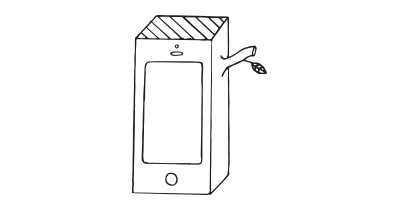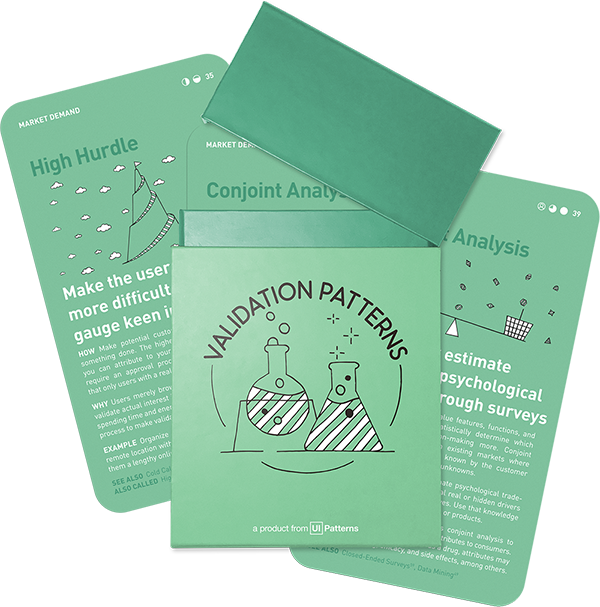
How: Create a non-functional version of your product and use your imagination to pretend it's functional to test if, how, and when you would use it.
Why: A Pinocchio prototype can help test the physical form factor of a product. As it is in fact a dumb prototype, it works best to convince yourself and your team, not others, that your idea is on the right track.
Simulate real-life situations
The primary goal of the “Pinocchio” experiment is to validate whether a product idea should be pursued further. It helps in understanding if there is a genuine market need for the product and how potential customers might interact with it. This approach is particularly beneficial for avoiding the costly mistake of developing a product that no one wants.
A Pinocchio prototype is best suited to test in contexts in which feasibility features such as size, shape, weight, and portability are crucial for product success. Upon successful validation, experimentation should move into more sophisticated experiements testing the actual interaction with the product.
A Pinocchio prototype does not need to be functional. It can be as simple as a physical model, a mock-up, or even a detailed drawing. The key is that it should be able to convey the concept of the product sufficiently to elicit useful feedback from potential users. This feedback can then inform whether the product idea has merit and is worth investing in further.
This approach saves time and resources as it avoids the full-scale development of a product that might not have a viable market. By presenting a non-functional or simplified version of the product to potential customers, companies can gather valuable data on customer interest and usage scenarios without the need for a large investment.
Origin of experiment
This pretotyping technique was inspired by the creation of the original Palm Pilot prototype cut out in wood by Jeff Hawkins. It is named by the wood puppet Pinocchio who, after being visited by the Blue Fairy, becomes a real boy.
The “Pinocchio” experiment involves creating a simplified or non-functional version of a product - much like a wooden puppet - to gauge consumer interest and validate the product concept. This method is part of a broader set of strategies known as pretotyping, a term coined by Alberto Savoia, which focuses on testing the initial appeal and actual usage of a potential new product.
As a Pinocchio prototype is not functional, the feedback obtained might be limited to the product’s concept rather than its actual usability or functionality. Similarly, the success of this method depends heavily on the quality of the prototype and the ability to effectively communicate the product idea to potential users.
Real life Pinocchio examples
Palm Pilot
Jeff Hawkins created a wood model of the Palm Pilot by taking a piece of wood, plastic, and a chopstick to give himself a sense of what the product would be like.
Source: Pretotyping: Techniques for Building the Right Product
121Gym App on Pebble Watch
Leslie Barry, who, before the advent of the Apple Watch, aimed to develop an app for the Pebble Watch to track exercises and workouts in the gym. Instead of jumping straight into technical development, Barry and his colleague created a mock-up of the watch interface on paper and attached it to the watch. They then ‘used’ this rudimentary prototype during workouts. This experiment highlighted practical issues with their initial concept, such as the difficulty of interacting with the watch while holding weights, which were not obvious during the brainstorming phase. Although the project, known as 121Gym, eventually did not proceed due to the arrival of Apple in the market, the exercise provided valuable insights into the product’s design and usability.
Source: The Pinocchio Method
A collection of 60 product experiments that will validate your idea in a matter of days, not months. They are regularly used by product builders at companies like Google, Facebook, Dropbox, and Amazon.
Get your deck!Related plays
- Quick review of pretotyping techniques by Alberto Savoia
- The Pinocchio Method by Leslie Barry
- Pretotyping – Techniques for Building the Right Product by Sean Murphy

